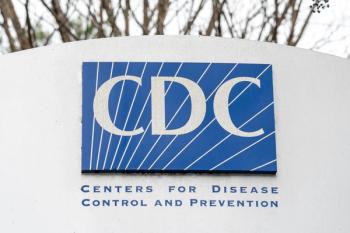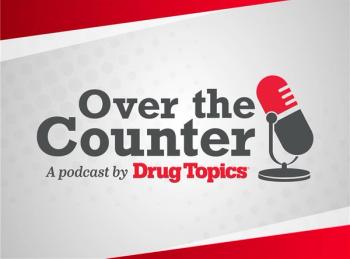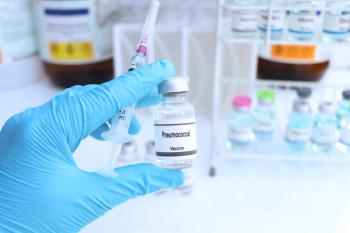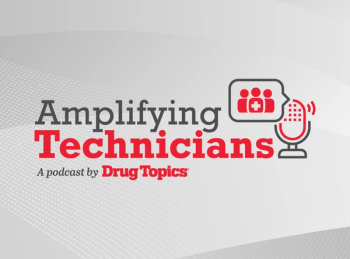
Pharmacist Involvement Improves Glycemic Outcomes With CGMs
Certified diabetes care and education specialists and clinical pharmacists are essential members of diabetes care teams.
Interdisciplinary teams can help improve glycemic outcomes for patients with diabetes using continuous glucose monitoring (CGM), according to results of a study published in Diabetes Spectrum. Investigators stated that certified diabetes care and education specialists and clinical pharmacists are essential members of diabetes care teams.1
“There is a trend recently where [CGMs] are even more accessible, but historically, we didn't teach this in the [pharmacy] curriculum. We did not teach diabetes technology,” Morgan Stewart, PharmD, BCACP, BC-ADM, clinical associate professor of pharmacy practice at the University of Texas at Austin,
Patient education is an important part of improving outcomes while using CGMs. According to the American Pharmacists Association, pharmacists need to be educated on CGM devices and how to interpret their data to help guide patients who are new to these systems. Student pharmacists may learn how to use CGMs in their courses, and practicing pharmacists should continue to learn about newer systems and how to best help patients.3
In the current study, investigators aimed to repeat the success of a previous study examining CGMs combined with team-based care in lowering glucose over a 3-month period. The new study included an intensive program using a weekly review of CGM data for lowering glucose levels at 3 months, and whether the results would be maintained at 6 months.1
Patients enrolled in the study initially met with an endocrinologist, who prescribed a treatment plan, and then with a clinical pharmacist, who reviewed medication and started counseling on CGMs. Then patients were referred to the diabetes self-management education program that highlighted diet, exercise, medication adherence, and other topics tailored to patients. During the first 3 months, patients were contacted by telephone or electronic message weekly by the pharmacist or physician, which included reviewing CGM data and adjusting pharmacotherapy as needed. After 13 weeks, the patients visited their endocrinologist to make adjustments to their medication and check their hemoglobin (Hb) A1c levels. Patients were then contacted by their pharmacist or physician at monthly intervals for 13 more weeks.1
Of the 29 patients enrolled in the study, 21 completed the study. Investigators found there were significant improvements in HbA1C levels, average glucose levels, and time in range. Mean HbA1c at 6 months was 7.6%; average glucose decreased from 212.8 mg/dL to 159.5 mg/dL, and time in range increased from 44.5% to 67.7%. As for treatment, sulfonylurea and thiazolidinedione were discontinued for all patients, but metformin and DPP-4 inhibitors remained unchanged. There were also slight increases in the number of patients treated with basal and bolus insulin and notable increases in the number of patients initiating SGLT2 inhibitors or GLP-1 receptor agonists after the program.1
“One thing about pharmacists is we are incredibly good about connecting with our community and sharing best practices and resources...starting at the point of pharmacy education [and] integrating these technologies into pharmacy curricula so that new graduates who go out into the workforce have a solid foundation,” Stewart said.3
READ MORE:
Ready to impress your pharmacy colleagues with the latest drug information, industry trends, and patient care tips? Sign up today for our
REFERENCES
1. Behnke A, Lucas KS, Parkin CG, Reddy V, Orlowski M, Edwards A. Persistent performance improvement using team resources and continuous glucose monitoring in patients with poorly controlled type 2 diabetes. Diabetes Spectr. 2025;38(3):353-358. doi:10.2337/ds24-0085
2. Meara K, Stewart M. Q&A: training, support key to pharmacist confidence with CGMs. Drug Topics. August 20, 2025. Accessed August 26, 2025. https://www.drugtopics.com/view/q-a-training-support-key-to-pharmacist-confidence-with-cgms
3. As CGM evolves, so does the role of the pharmacist. American Pharmacists Association. Accessed August 26, 2025. https://www.pharmacist.com/Blogs/CEO-Blog/as-cgm-evolves-so-does-the-role-of-the-pharmacist
Newsletter
Pharmacy practice is always changing. Stay ahead of the curve with the Drug Topics newsletter and get the latest drug information, industry trends, and patient care tips.






































































































































